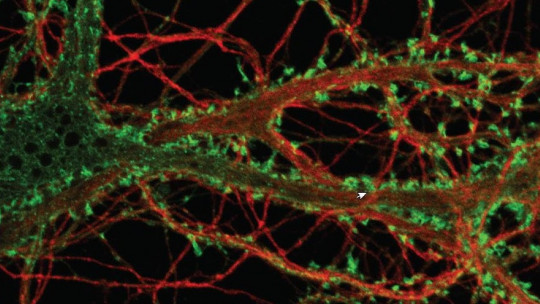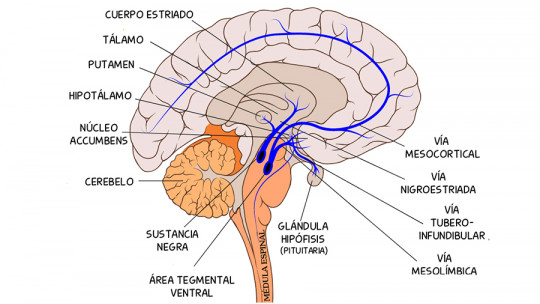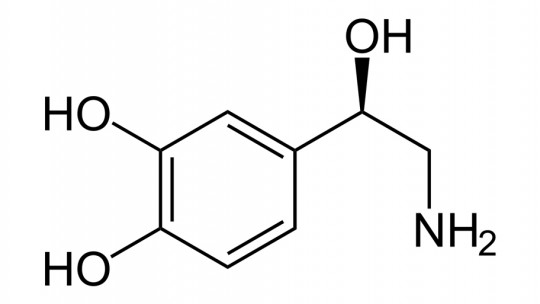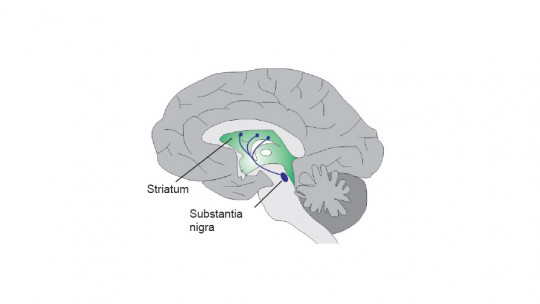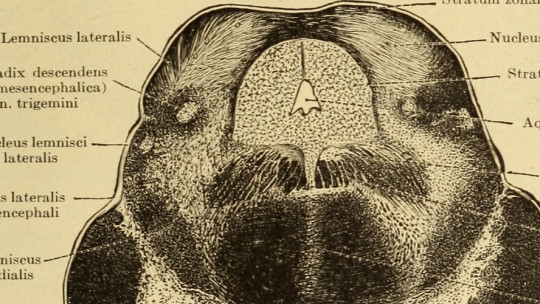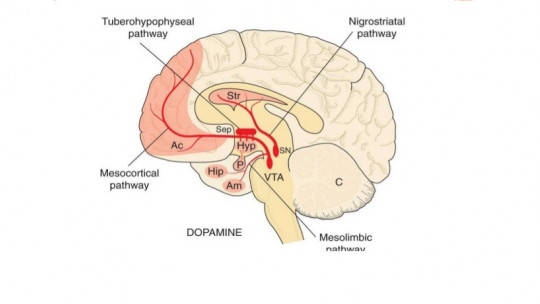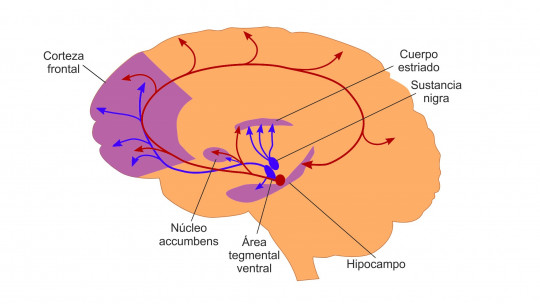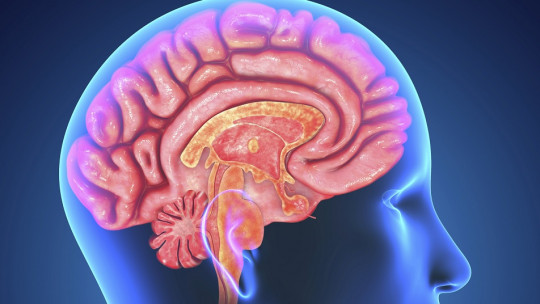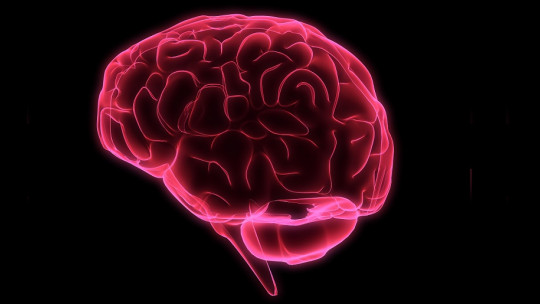
Our brain is a complex network of neurons that are grouped into different structures and nervous pathways, and that communicate with each other through electrochemical impulses generated and mediated largely by neurotransmitters. These neurotransmitters do not appear out of nowhere, but are also synthesized and received in and by the different structures and pathways of the brain.
Among the neurotransmitters, one of the most studied with respect to the pathways through which it circulates is dopamine. In this article We are going to review the different dopaminergic pathways present in our brain
dopamine
Before talking about the pathways that transmit it, it may be useful to remember what dopamine is. It is a neurotransmitter, a hormone used by the different neurons in our nervous system to communicate with each other.
We are before one of the most important neurotransmitters for human beings and their survival since its functions are multiple and of great significance in allowing us to regulate our behavior: participating in aspects such as the perception of pleasure (in fact, it has often been called the pleasure hormone), influencing emotions and personality, allowing memory and creativity and being essential when it comes to regulating behavior and directing it towards goals.
It is a hormone that is present naturally in our body, although it can also be synthesized artificially. This hormone is a catecholamine, derived from dopa and before that from tyrosine. And it can be found in numerous parts of the brain. One of the main points where it is synthesized is in the midbrain and the substantia nigra. And there are multiple routes through which it circulates.
The 4 major dopaminergic pathways
Although dopamine can be found in very different nervous pathways, there are four major dopaminergic nervous pathways, which govern the synthesis and transmission of this hormone and on which it has great effects.
1. Mesolimbic pathway
One of the best known dopaminergic brain pathways is the mesolimbic pathway. And in this way we find a large part of the brain reward system which allows us to feel pleasure and motivation in our behavior.
This pathway connects a large number of areas and regions of great relevance, highlighting among them the ventral tegmental area (which is also part of the mesocortical pathway), the nucleus accumbens (area where most drugs act), the amygdala, the hippocampus and the prefrontal cortex.
Thanks to it we can feel motivated to do something or to approach specific situations or stimuli, learn based on stimulation and make associations that make us repeat our behavioral patterns, learning. It is also linked to the management of emotions.
However, hyperarousal of this pathway can generate hallucinations and other perceptual alterations and aggression. Also disorganized behaviors or the performance of risky behaviors. In fact, the positive symptoms of schizophrenia are associated with an excess of dopamine in this pathway The search for its activation can also lead to the acquisition of addictions and behavioral problems.
2. Mesocortical pathway
The mesocortical pathway is especially linked to cognitive This pathway, which begins in the ventral tegmental area (which, as we have said, is also part of the mesolimbic pathway), reaches the frontal lobe and the cerebral cortex (especially notable are the dorsolateral and ventromedial cortex of the prefrontal).
Closely linked to the mesolimbic pathway, the mesocortical pathway is also related to affects and emotions, as well as the abilities and use of executive functions.
The presence of excessively low levels of dopamine in this pathway generates profound alterations at the cognitive level, producing poverty of thought, difficulties in the use of logic and reasoning, and poverty of speech. In fact, the negative symptoms of schizophrenia are considered to be largely explained by a lack of sufficient dopamine in this brain pathway. The appearance of dullness, poor expressiveness is common incongruence between what is experienced and what is felt, anxiety and bradypsychia.
3. Nigrostriatal pathway
The nigrostriatal pathway is one of the main and most important dopaminergic pathways, being in fact the pathway where most of the dopamine in the entire brain is generated. This pathway goes from the substantia nigra to the basal ganglia (specifically the striatum).
The nigrostriatal pathway is especially linked to motor control, its degeneration being the main cause of disorders such as Parkinson’s and choreic movements as in the case of Huntington’s Korea.
4. Tuberoinfundibular route
This nervous pathway, with great influence by dopamine, is found connecting the tuberal region of the middle hypothalamus to its infundibular region. Roughly connects different parts of the hypothalamus and pituitary gland This pathway is of great importance, since it influences the secretion of hormones by the pituitary gland. One of the hormones most affected by the functioning of this pathway is prolactin.
The presence of dopamine in this pathway inhibits the synthesis of prolactin, in addition to promoting the generation of somatotropin. In fact, when consuming neuroleptics we can observe that one of the side effects that can occur due to the decrease in dopamine are sexual alterations such as galactorrhea and different sexual dysfunctions resulting from an increase in prolactin synthesis It greatly affects fertility.
The other dopaminergic pathways
When asked about what dopaminergic pathways exist, most people with knowledge on the subject only refer to those mentioned above. But the truth is that although the mesolimbic, mesocortical, nigrostriatal and tuberoinfundibular pathways are the main ones, they are not the only ones that exist. Through other areas of the brain there are other secondary dopaminergic pathways
Specifically, we can find a nervous pathway that goes from the ventral tegmental area to the amygdala, another that goes from the ventral tegmental area to the hippocampus, another that would again circulate between the ventral tegmental area and the cingulum, a connection between the substantia nigra and the subthalamus and a last one that would connect the ventral tegmental area with the olfactory bulb.
Its functions are much less studied and are of less importance than the previous ones, which also include to a certain extent some of its processes. But it would be very useful to analyze its importance in greater depth.
Disorders associated with these neural networks
Dopamine is a neurotransmitter essential for the regulatory functioning of humans, as well as other animals. The presence of dysfunctions in the pathways that synthesize and use it can generate diseases and disorders Among the most relevant are the following.
1. Schizophrenia
As we mentioned above, the main symptoms of schizophrenia seem to be linked to alterations in dopamine levels in some of the dopaminergic nerve pathways Specifically, positive symptoms seem to correspond to an excess of dopamine in the mesolimbic pathway, while negative symptoms would correspond to a deficit of this neurotransmitter in the mesocortical pathway. The other two main routes would not, in principle, have any alteration per se.
2. Parkinson’s
Parkinson’s is another of the disorders that is most linked to the dopaminergic pathways, specifically the nigrostriatal. In fact, it is degeneration of dopaminergic neurons in the substantia nigra the one that generates the symptoms.
- Related article: “Parkinson’s: causes, symptoms, treatment and prevention”
3. ADHD
Different investigations have suggested that there may be influence of alterations in the mesocortical pathway and the mesolimbic pathway in attention deficit hyperactivity disorder, having an effect on the difficulties of individuals with this disorder in terms of motivation, attention capacity, planning or inhibition of behavior.
4. Addictions
Dopaminergic pathways are deeply associated with the acquisition and maintenance of addictions, with the brain reward circuit in its tracks. This especially includes substance addictions, but also more behavioral types such as gambling addiction.
- You may be interested: “Addiction: disease or learning disorder?”
5. Hyperprolactinemia
It has been observed that the decrease in dopamine levels in the tuberoinfundibular pathway generates hyperprolactinemia, which It has various effects in areas such as reproductive Alterations in menstruation and fertility or galactorrhea are some of the best-known symptoms.
6. Other disorders
There are many other problems that have been associated in some way with the malfunction of any of the above routes. For example, have been related to the manifestations of movement disorders such as Tourette syndrome or tic disorders, and even in some cases with obsessive compulsive disorder.

